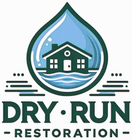The foremost difference between water mitigation vs. restoration is that water mitigation is the first step after storm damage to prevent any further structural damage. It involves rapid water extraction, cleaning, and complete drying. The restoration process, on the other hand, addresses the damages caused by the event and revolves around making necessary repairs to get life back on track fast. Dry Run Restoration can tackle any water damage situation with care, efficiency, and expertise, ensuring your and your structure’s safety.
Revive Your Space For a Fresh Start: What Sets Apart Water Mitigation vs. Restoration?
Are you searching for water mitigation near me after a sudden burst pipe has flooded your property? Do you know that water damage emergencies affect 14000 Americans every single day, accounting for over $2.5 billion paid out in insurance claims last year? Whether due to extreme weather events like floods or because of accidental plumbing emergencies, one always stands a chance of encountering water damage. Understanding the difference between the process of water mitigation vs. restoration is essential to stay calm and taking the right move when facing water damage. Timely addressing the issue can result in swifter recovery and help restore your life back on track as soon as possible.
| Did you know? According to a 2025 report from the Insurance Information Institute (III), 22.6% of all insurance claims in 2023 were due to harsh weather conditions, mainly freezing and water damage from floods. |
Here is a guide detailing the difference between water mitigation vs. restoration to help you make informed decisions and minimize property damage.
Water Mitigation Process Explained
Stop the Source of Damage
This is the very first step, focusing on stopping the water source to prevent the damage from further ruining your property. It aims to lessen the damage by reducing the impact of what has already happened.
Water Evacuation
After stopping the water source, the water mitigation process turns towards removing all standing water from the property, using powerful pumps to prevent water from seeping into your building materials and foundations. In addition, mold and mildew begin thriving in damp conditions within 24 to 48 hours.
Removal of damaged Building Materials and Belongings
In this step, all unsalvageable material is removed and discarded, like ruined carpets, drywall, and damaged flooring, to prevent bacterial and mold growth.
Drying the Water Stressed Property
After water evacuation, the next step involves the drying of all materials, including drywall and flooring, and all belongings, to prevent bacterial growth. This involves using fans and dehumidifiers, air movers, and moisture meters to remove any last remaining traces of moisture from the environment.
| Important fact!Bacteria such as E. coli or Salmonella can be present in flood waters along with viruses and parasites. |
Restoration to Renew and Rebuild
Cleaning & Sanitization to Restore Your Oasis
Thorough cleaning and sanitization follow after drying the property to prevent mold growth and ensure the safety of the occupants and the structure.
Addressing Repairs For a Brighter Future
Once the water damage services are done with the primary mitigation process, they turn their focus towards the second important stage of restoration. This involves addressing the structural repairs of building materials like flooring, drywall, and ceiling.
Combating Mold for Perfect Recovery
This important stage involves steps taken for mold remediation to prevent health risks.
Painting and Refinishing to Restore the Rhythm of Your Space
In this stage, everything is revived, after a fresh coat of paint and making any refinishing touches, so you can make a fresh restart.
| Important fact!Bacteria such as E. coli or Salmonella can be present in flood waters along with viruses and parasites. |
Conclusion
Water mitigation helps minimize further damage and focuses on preventing harm by taking necessary steps, like the removal of standing water, drying, and cleaning. Restoration mainly focuses on repairs and mold remediation. The mitigation process lasts a few days, whereas the duration of restoration varies depending on the extent of the damage. If not addressed right away, water damage can wreak havoc with your health and property in the form of secondary damage like mold growth and weakened foundations.
FAQs
Does my insurance policy cover water damage?
Standard insurance policies cover only sudden or accidental water damage. If negligence has resulted in damage, or flood water damage, you are not covered, unless you have an additional flood damage policy.
How much damage does flooding cause annually?
Flooding causes over $180 billion worth of damage every year in the US.
What are the different types of water during damage?
A category 1 clean water from leaky faucets is usually not harmful. Category 2 gray water from washing machines and dishwashers can pose health risks, while category 3 black water from sewage or floods has high contamination levels and can be extremely harmful.
